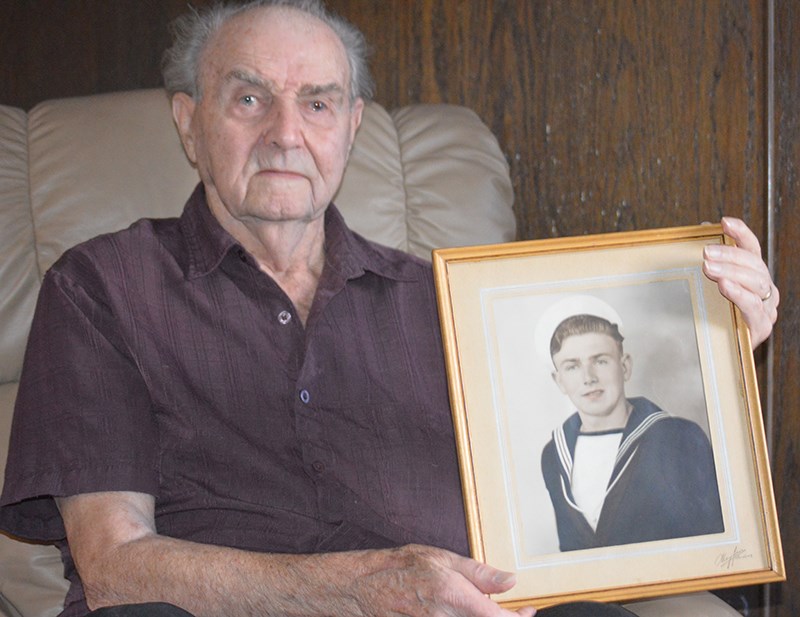For the Allies during the Second World War, keeping supply lines open across the Atlantic was crucial to the war effort.
This is where convoys across the ocean played such a pivotal role, as they protected the routes from attacks, especially from German submarines.
For navy veteran Oscar “Ollie” Runzer, who trained in sonar, known as ASDIC, this was his life for most of the war.
Born in Romania, he and his family moved to Canada when he was a child, first to Wetaskwin, Alta., then to Abbotsford. He now lives in Squamish.
In 1942, he enlisted as an 18-year-old. He chose the navy, as did many of the other young men from Abbotsford.
“I liked the uniform too,” he said with a smile. “I liked the look of it, but it was kind of tight to wear.”
Initially, he was on the HMCS Prince Robert that protected the West Coast convoys up to U.S. bases in Alaska. When the call went out for ASDIC (sonar) operators, he studied and was assigned for the corvette HMCS Edmonston, on which he spent the next two and a half years.
Runzer spent much of his time on runs across the Atlantic, accompanying convoys of ships from the northeastern U.S. or the Maritime ports, to make sure they arrived safely on the other side.
While he did some routes further south between Liverpool and Gilbraltar, most of the time his ship was sailing across the north Atlantic, on the lookout in the murky depths for German submarines.
“That’s where they needed the ASDIC operators, because of submarines,” he said. “Our job was to protect that convoy.”
On the routes farther south – for example, near the Bay of Biscay – they faced bombing raids from above. The Germans, after all, controlled France, so they were close enough to send planes.
In the north Atlantic, the risk came from what lay beneath, which is why the sonar operators were so crucial.
In all, Runzer made at least a dozen trips across the ocean during the Second World War. There were some times when he and his colleagues could let down their guard in port while ships would load up on supplies or have maintenance done. Even there, though, there was always a threat. Runzer recalls returning to find a favourite pub in Liverpool had been bombed during a raid. Other times, they would stay in the tube stations of London to wait out an attack.
“We spent a lot of time in air raid shelters on our holiday in London,” he recalled.
He spent a lot more time at sea than at any base, and life there could be rough, especially during bad weather.
“Sometimes it would be calm and sometimes it would be waves as high as a house,” he said. “Those little corvettes were like a cork.”
There was an upside to rough weather, though, because it meant less danger from below.
“We liked it rough because when it was rough, the submarines weren’t out there.”
Runzer was transferred to a frigate, the HMCS Stone Town, in the summer of 1944, which is where he spent the rest of the war. He recalls that when the Germans surrendered, he was in Londonderry, Northern Ireland, where bands played while everyone celebrated the end of the war, at least in Europe. His call of duty, however, was not quite done, as he became a quartermaster and helped bring military personnel being discharged back from the war, taking them from St. John’s, Nfld., to Quebec until he, himself, was discharged in October 1945.
He and his wife, Mima, settled their family in Squamish in 1966 to live closer to his job at a Brittania aggregate operation.
Runzer reflected on his early days as an 18-year-old in 1942, acknowledging he and his friends did not know how big a conflict the war that they had just signed up to fight really was going to be.
“I don’t think anybody ever figured it would last four [more] years.”



